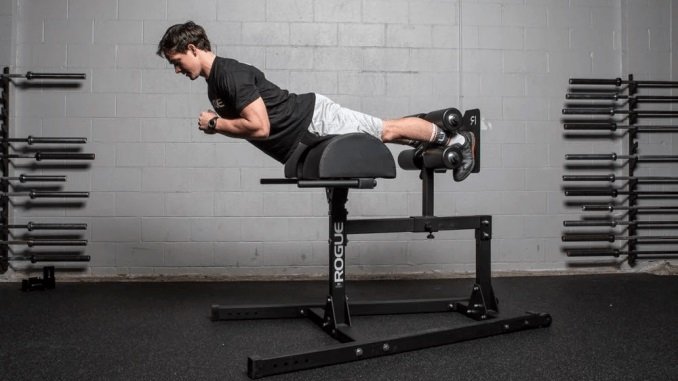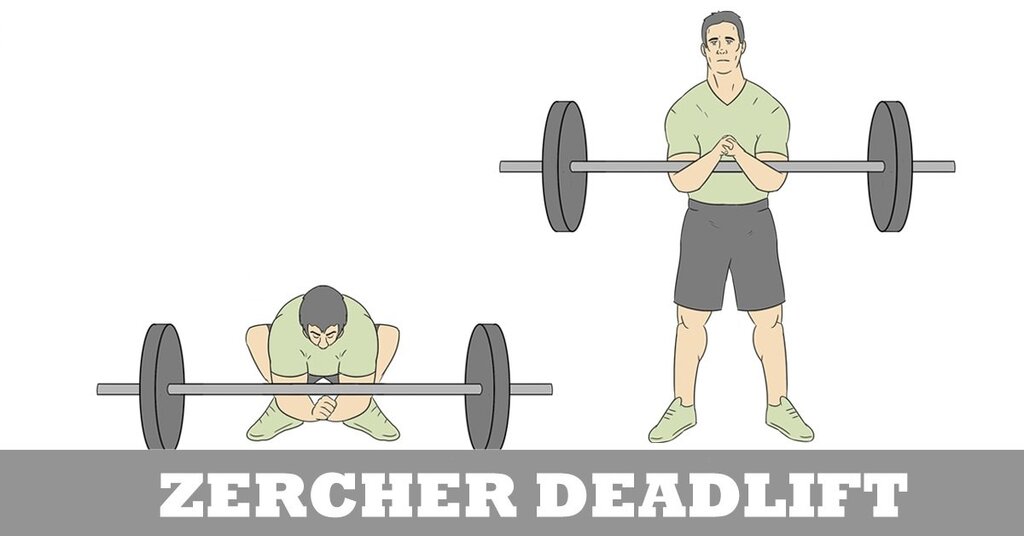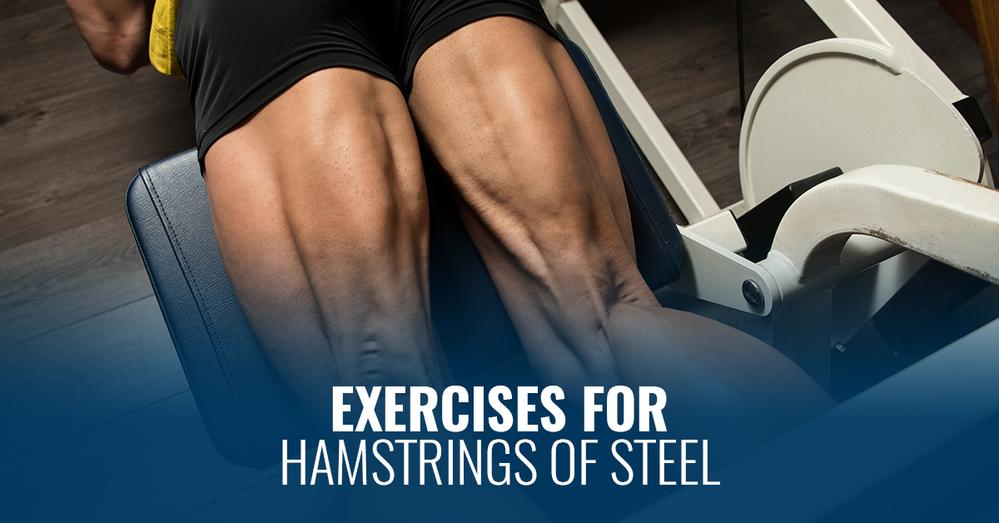When you want to run fast, jump high, or just have a set of huge wheels to show off, the development of the hamstrings and overall posterior chain is critical to your end results.
If you’re already incorporating staple exercises such as Olympic Lifts, Deadlifts, and Sprints in your routine then certainly your hamstrings and posterior chain are getting solid stimulus.
However, there are a few key exercises that you can add to your programming to assist with your development, so I am going to introduce you to the 2 best Exercises For Hamstrings.
Exercises For Hamstrings: GLUTE/HAM RAISE

A word of caution – this is one of the best Exercises For Hamstrings, it places a great deal of stimulus on your hamstrings in a very unique and effective manner, therefore certain precautions must be taken.
It’s imperative for your hamstrings to be sufficiently warmed-up. If they aren’t you’ll certainly cramp up on your first rep – or, possibly worse, strain a muscle. Even if you are sufficiently warmed-up you still may cramp up.
But don’t let this scare you away from this movement that can help take your development to the next level.
You’ll either need a partner for this movement or a fixed object to act as one.
Begin by kneeling on a mat or pad with your toes pointed towards your knees (dorsiflexion of ankles). If your toes are pointed away from your knees that will allow your calves to contract and they most certainly will cramp up.
Maintain a straight line from your knee joint through your hip joint and to your shoulder joint throughout the entire movement as best you can.
Your entire body should move from the knee joint alone.
Start by slowly lowering yourself about 1-2 inches and contract your glutes as hard as possible.
From here, lower yourself in a controlled manner to the floor and use only as much of a “push-up” as you need to complete the rep.
Think of it as an active spotter and try not to have your upper body do all of the work.
Done properly, this will fatigue the hamstrings and glutes quickly, especially at first.
Shoot for low rep ranges in the 3-6 reps per set range, as this is a terrific rep range for the muscle fiber makeup of the hamstrings.
Once you can do a set of 6 reps with good technique, you can either add a few more reps or find ways to further challenge your body with this exercise.
Some ways to add difficulty to this exercise are:
-Hold for a longer count at the top glute contraction
-Lower your body more slowly. A 3-5 count here is a good starting point.
-Useless or no upper body assistance at the bottom
-Wear a weighted vest.
Exercises For Hamstrings: ZERCHER STIFF-LEG DEADLIFT

Another great exercise for hamstrings, Zercher is a reference to the positioning of the barbell in the crook of your elbows and against your body.
The movement is similar to a stiff-leg deadlift where you hold the barbell in front of you or on your upper back.
The main benefit of the Zercher positioning is the barbell positioning places a unique stimulus on the hamstrings. In addition, for many, it’s also a simpler and somewhat safer version of the stiff-leg deadlift due to the positioning of the load to the body.
Begin with your feet about shoulder-width apart and knees slightly bent. Some prefer to have their legs straight throughout, you’ll have to see what works best for you.
Whatever you decide, the goal is to keep the same knee angle throughout, not varying from your original knee position – unless, of course, you need to make an adjustment.
This movement should be 100% from the hip joint.
As mentioned above, the barbell will be in the crook of your elbows and against your body. Maintain this throughout the movement as well.
Push the glutes back and bend forward from the hip, being careful not to round the back or place too much emphasis on the low back.
Once a gentle stretch is felt in the hamstrings – or your upper body is parallel with the ground – push through the heels and hamstrings to return to the upright position.
Mind/muscle connection is important here. It’s imperative – for both safety and effectiveness – that your hamstrings do the work and you don’t just “muscle up” the reps with your lower back.
A rep range of 6-10 reps works well for this exercise in most programming.
